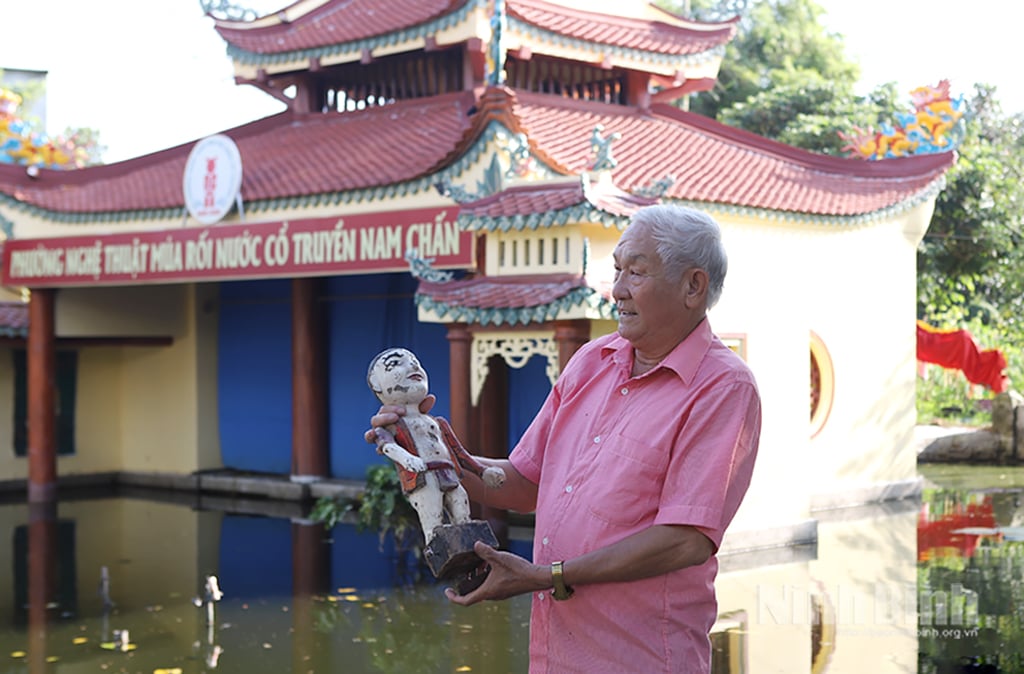
Rach Village, also known as Ban Thach in ancient Nam Chan, is a culturally deposited land, famous for its water puppetry with a history of more than 250 years. According to the elders, the Rach Village water puppetry troupe was established in 1755 by the founder of the profession, Mai Van Kha. Since then, water puppetry has become a "reserve" in the spiritual and cultural life of the people, closely associated with village festivals and agricultural activities typical of the delta region.
Currently, the Rach village water puppetry troupe gathers more than 20 artists of all ages, including women and high school students. Many families have three generations of artists: the grandfather is the leader, the children carve the puppets, and the grandchildren learn to perform. The art of puppetry here has a strong traditional identity, standing out with a rich repertoire, reflecting the true life of labor, beliefs, and national history.
The Rach village water puppetry troupe is preserving and regularly performing 18 traditional puppet shows, divided into thematic groups: opening and introduction shows, agricultural activities - village life shows, legends - folk tales, festivals - beliefs... Most of the shows do not have dialogue but convey content through expressive movements, folk sounds combined with traditional musical instruments such as drums, two-stringed fiddles, flutes, moon lutes, wooden fish... Each show only lasts from 3 to 7 minutes but is enough to tell a complete story, creating an attractive and lively performance rhythm.
Not only are they performers, the water puppeteers of Rach village are also talented craftsmen. Each puppet - only about 30-40cm high, is the crystallization of dozens of hours of meticulous, tireless labor. The material used to make it is sung wood - a light wood, easy to carve and durable when soaked in water for a long time.
Phan Duy Trien, a performer and water puppet maker, shared: “Choosing a beautiful piece of wood is like choosing a partner, if the wood has soul, then the puppet will have spirit”. After being selected, the wood is dried and treated with anti-warping and anti-termite scent. The stages of production include: rough carving, sophisticated carving, smoothing, multi-layer painting and drawing to create spirit. In particular, the final stage is painting the puppet’s face, which requires the artisan to have a high aesthetic sense and artistic perception to “breathe life” into each character.
It usually takes 4 to 5 months to complete a set of water puppets, not to mention the humid weather that prolongs the drying and painting process. The puppets are stylized to be fresh, lively, humorous and highly symbolic, while still maintaining the standard of regional costumes: the North uses the four-panel dress, the South uses the ao ba ba...
Currently, Mr. Trien's production facility has an area of over 200m², creating regular jobs for 5 local workers with a stable income of 6-7 million VND/month. Each year, his family produces about 2,000 puppets for performances or as gifts. His facility's products are present in many large theaters such as Thang Long Puppetry Theater, Central Puppetry Theater and art troupes across the country.
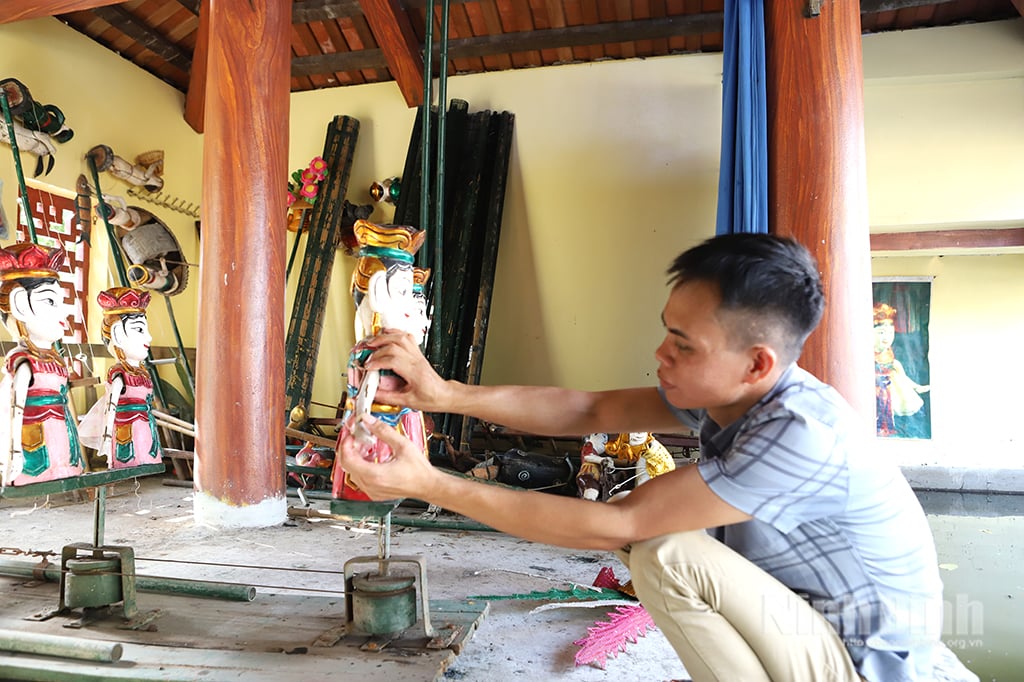
Through the ups and downs of time and social tastes, the art of water puppetry in Rach village is still preserved as a part of the community. Thanks to the attention of the local government, in 2023, the “Thuy Dinh”, the main performance venue of the puppet troupe, was renovated at a cost of 200 million VND, helping the puppet troupe perform more regularly, especially during festivals.
Every year, the puppetry troupe organizes dozens of mobile performances at schools and festivals in and outside the province, not only promoting the homeland’s culture but also contributing to aestheticeducation and nurturing the love of folk art in the younger generation. Many domestic and foreign tourist groups also come to Rach village to admire and learn more about this unique art form.
Water puppetry in Rach village is not just a performance, but the soul of the land and people here. Amidst the hustle and bustle of modern life, the sound of the drums, the sound of the water and the dancing puppets are like deep slices, awakening the cultural memories passed down from generation to generation. Preserving the profession is not only preserving the form, but also fueling passion, a persistent journey of innovation and adaptation.
Performances that combine modern lighting, electronic arrangements, and interaction with young audiences are a new direction being experimented with by young artists in the puppetry troupe. It is their way of “retelling” old stories in today’s language while still preserving the national spirit, but more vivid, attractive, and accessible to contemporary audiences.
Then, one summer afternoon, when visitors from afar stopped by that small village pond and saw Mr. Teu grinning on the water, they suddenly realized: Heritage is still alive, still telling stories with the very beating of the homeland's heart.
Source: https://baoninhbinh.org.vn/giu-hon-roi-nuoc-lang-rach-198512.htm




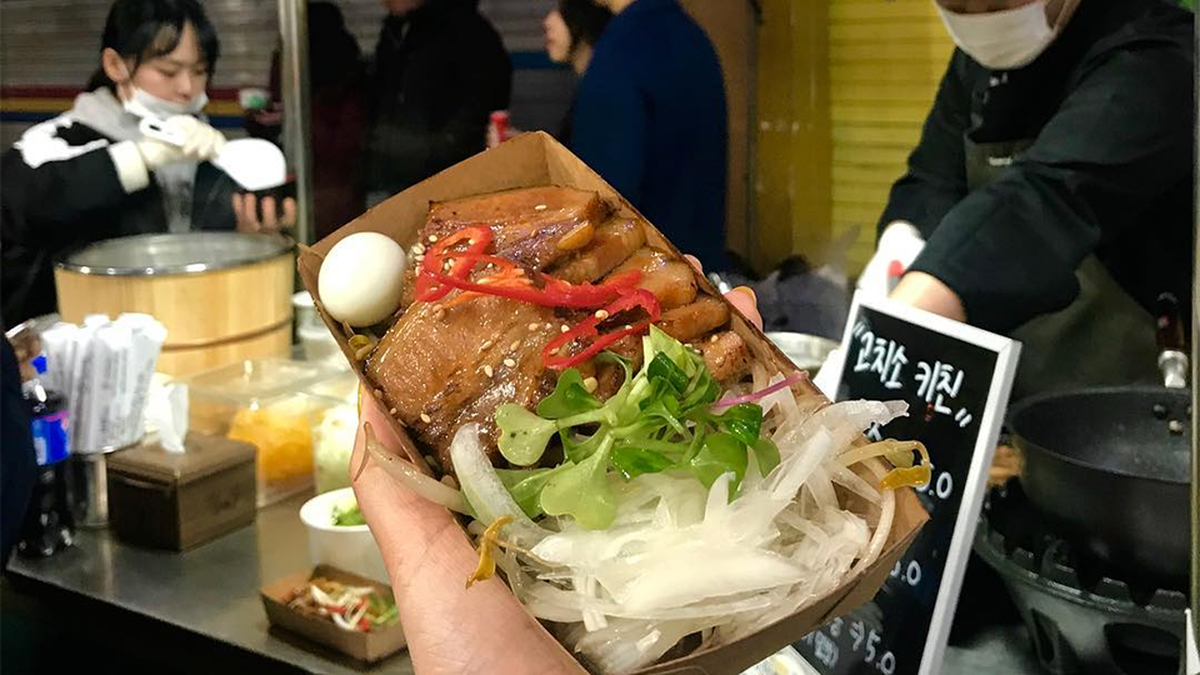






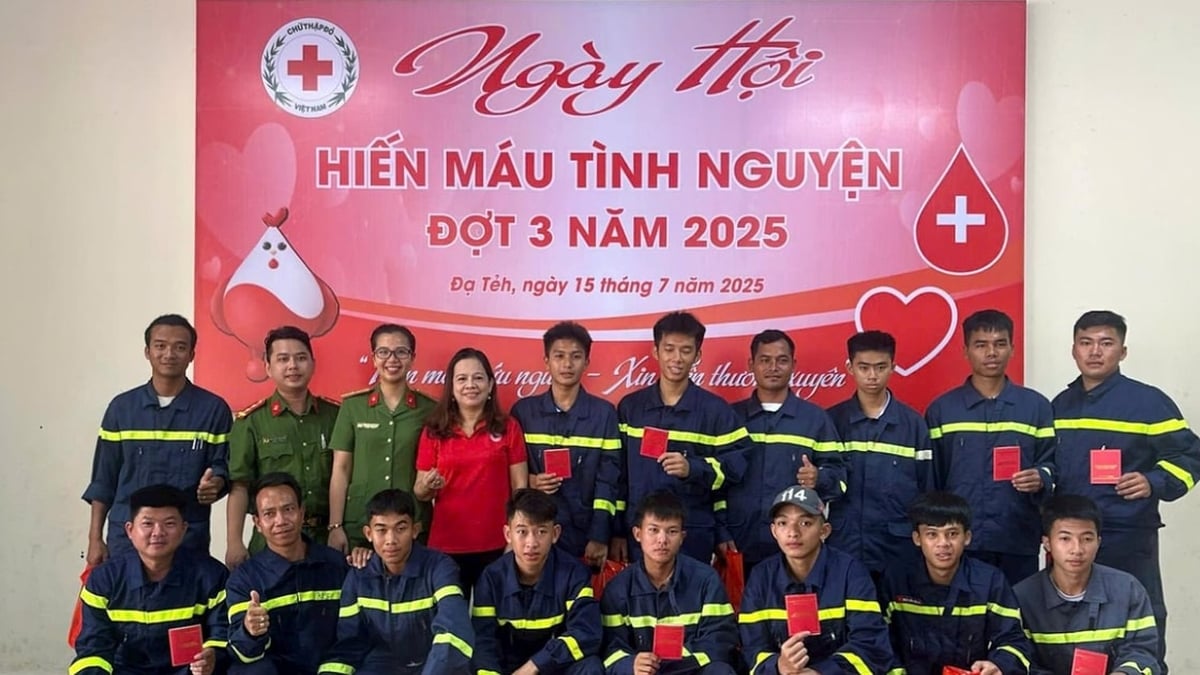







































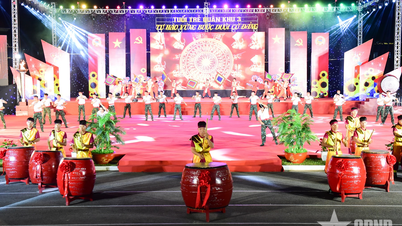














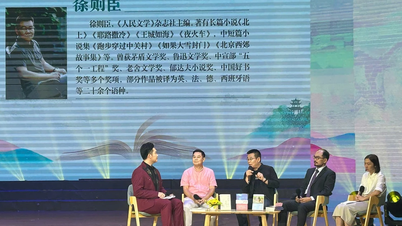
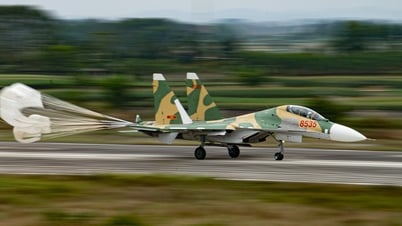
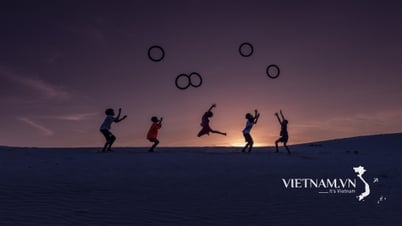







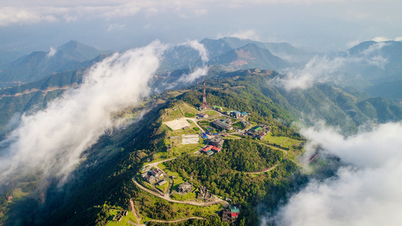
















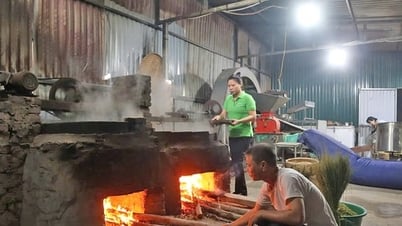


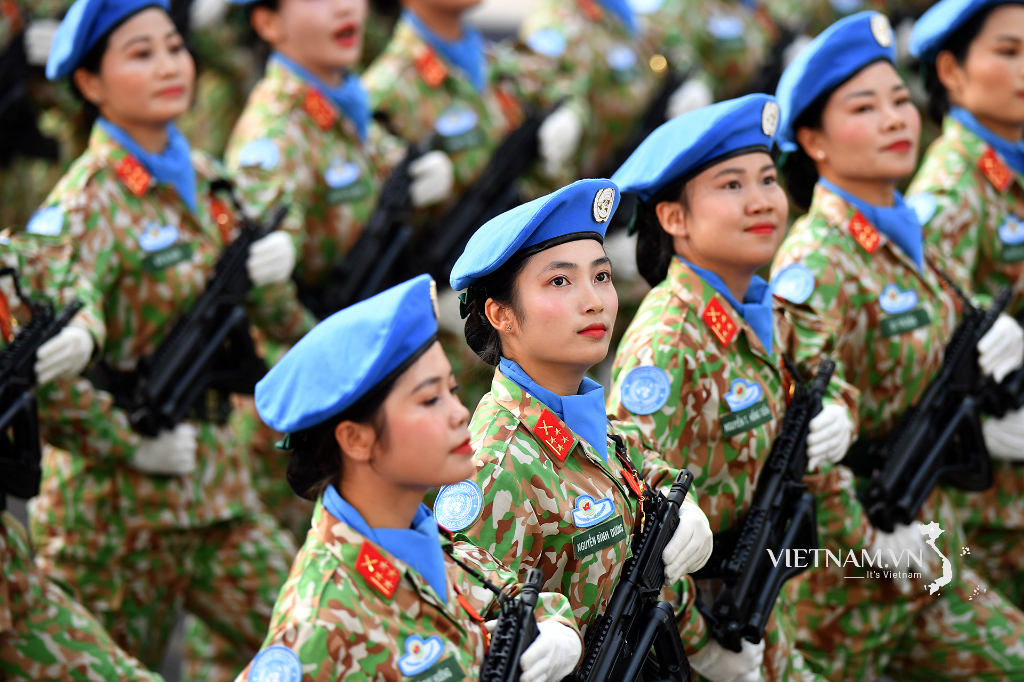
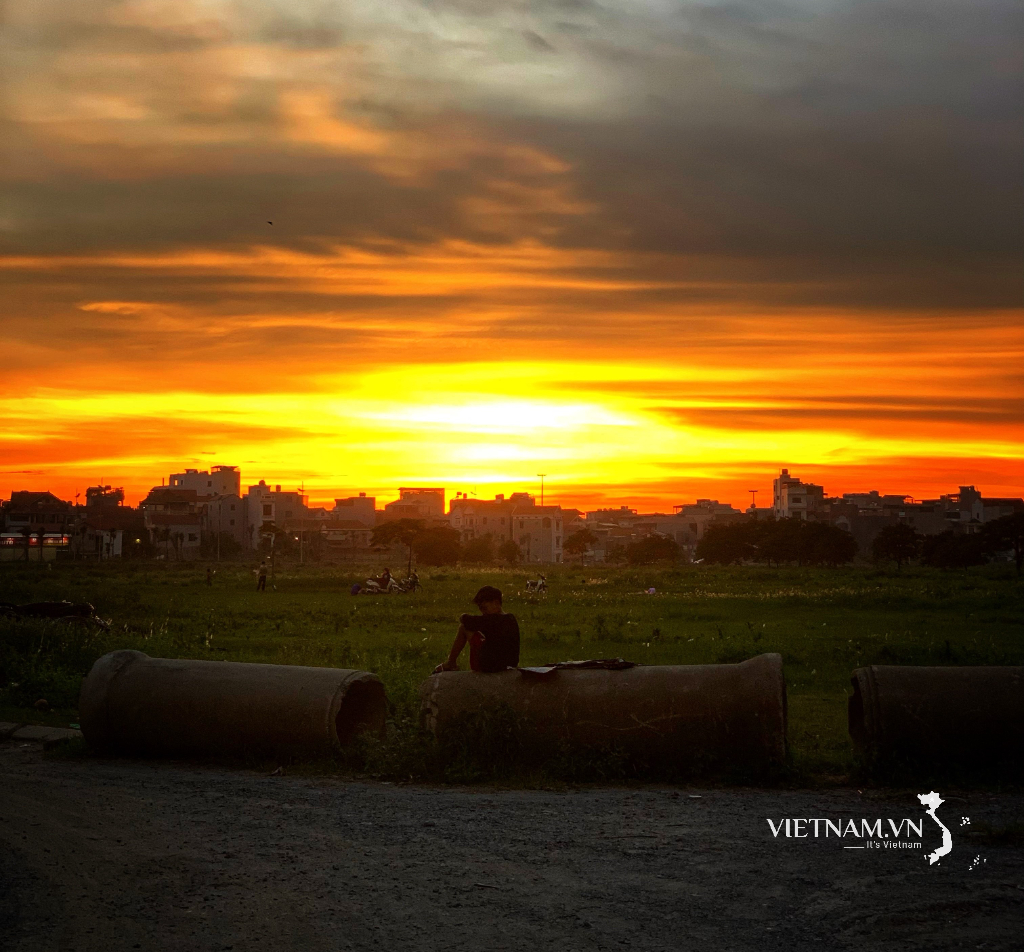


Comment (0)